A busy and rather unattractive background but I like the bird in spite of it.
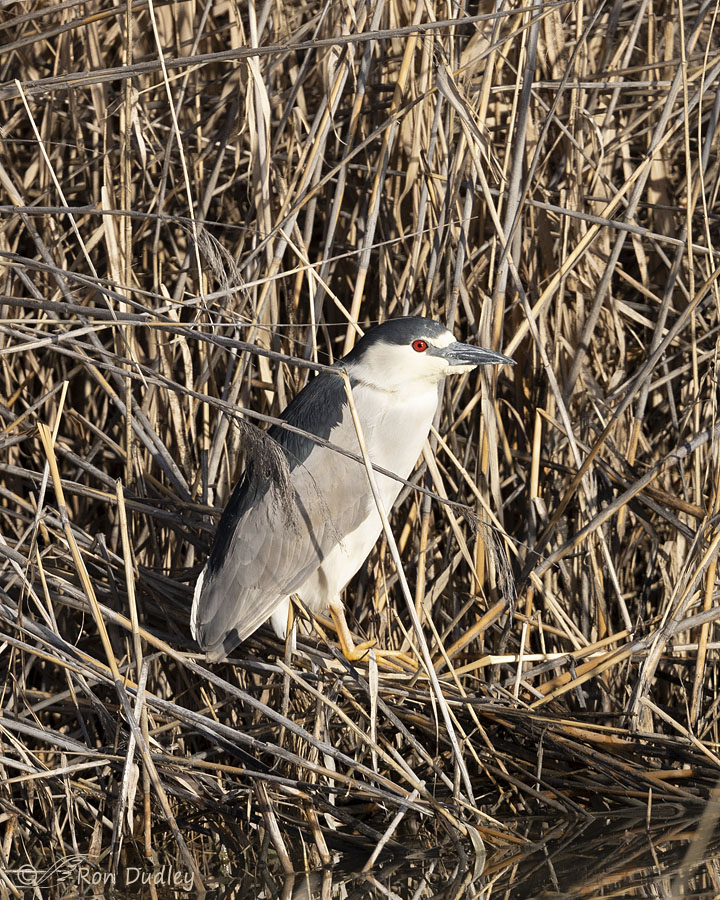
When I found this Black-crowned Night Heron yesterday morning at Bear River MBR ‘he’ was partially obstructed by dead phrags while he was perched but I hoped to eventually get flight shots if and when he took off. It took a while but this time my patience paid off.
This photo and the following 10 are sequential without any skips but after that there was a hiccup or two. Once again I’ll try to keep my narration to a minimum.
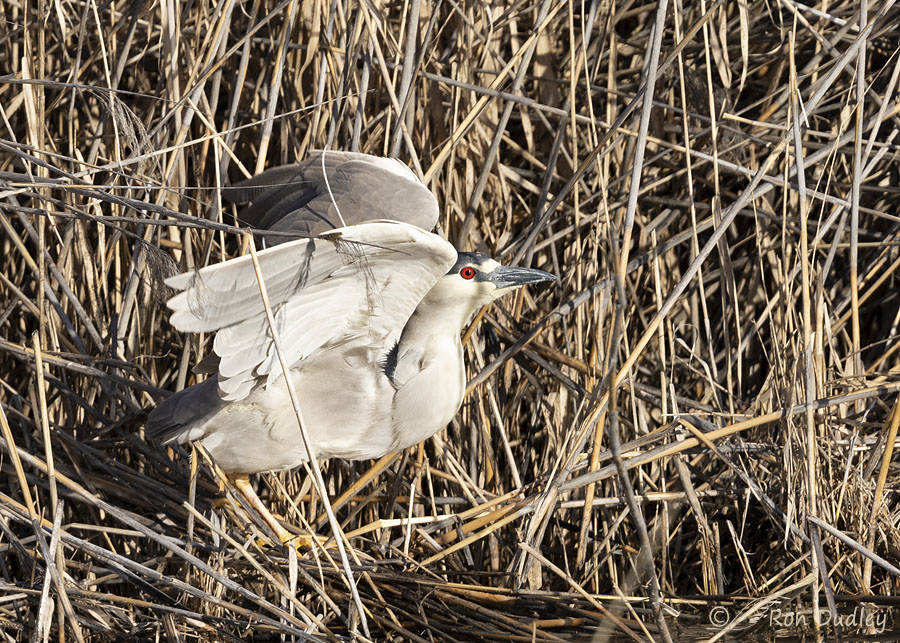
Takeoff commences.
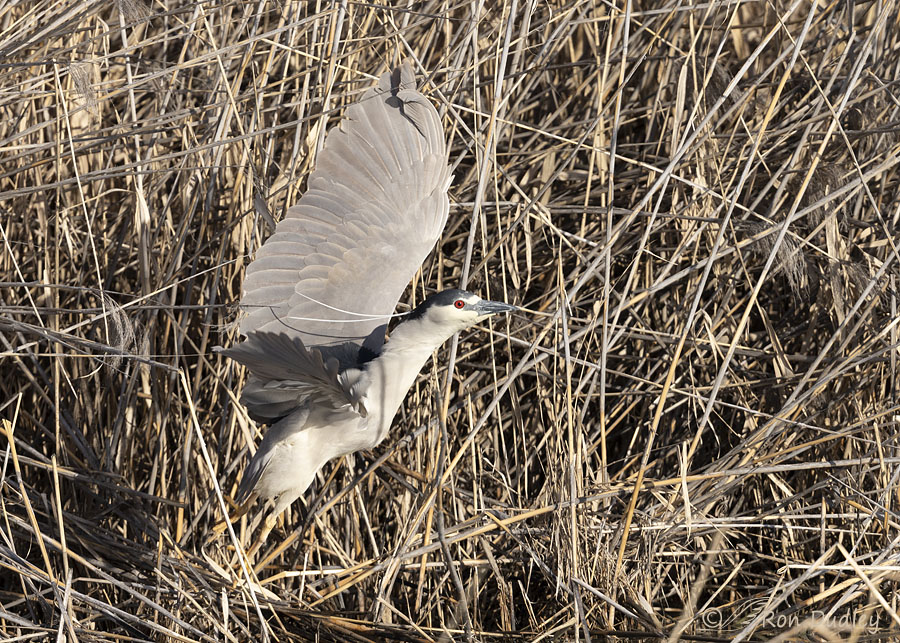
Pushing off.
This photo gives us our first good look at both of his twin white nuchal (nape of neck) plumes, that bounced around into various positions during his flight.
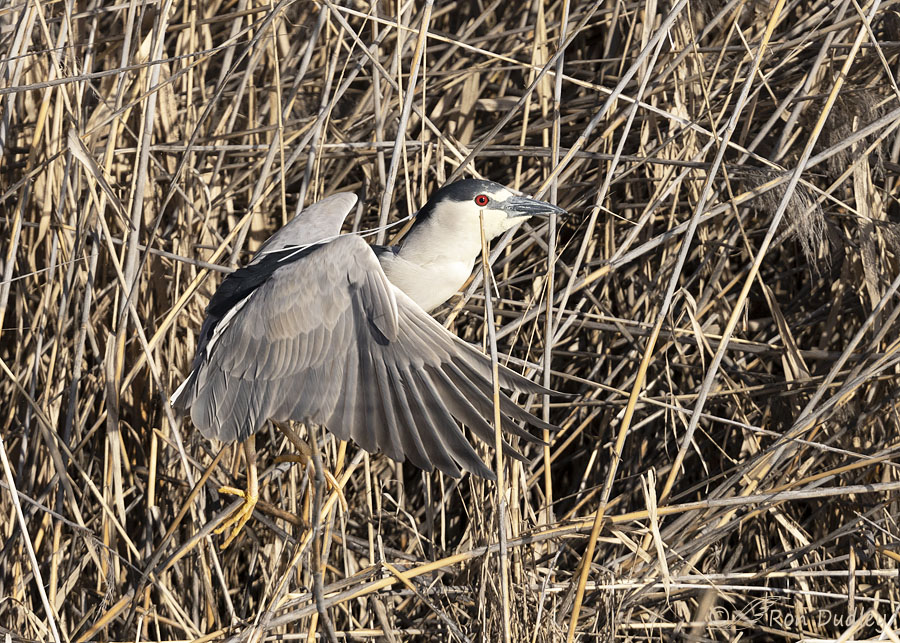
Liftoff.
It almost looks like that one phrag tip is about to poke him in the eye. I wouldn’t have been surprised if he’d closed his nictitating membrane to protect it.
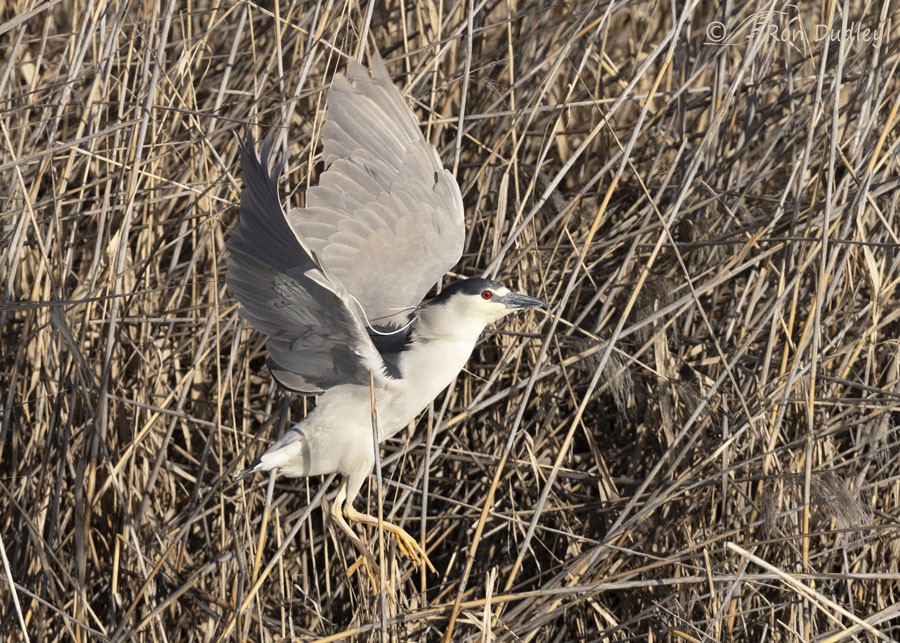
His takeoff was more complicated than it might appear because he had to negotiate phrag stems on both sides of him, which…
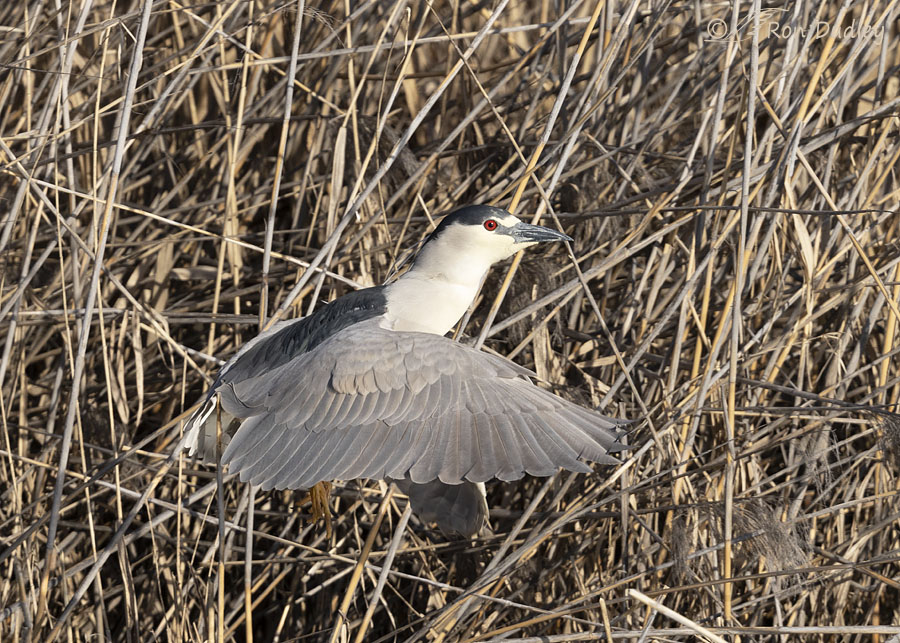 he managed to do with precision. I was also appreciative of his very slight head turn toward me that…
he managed to do with precision. I was also appreciative of his very slight head turn toward me that…
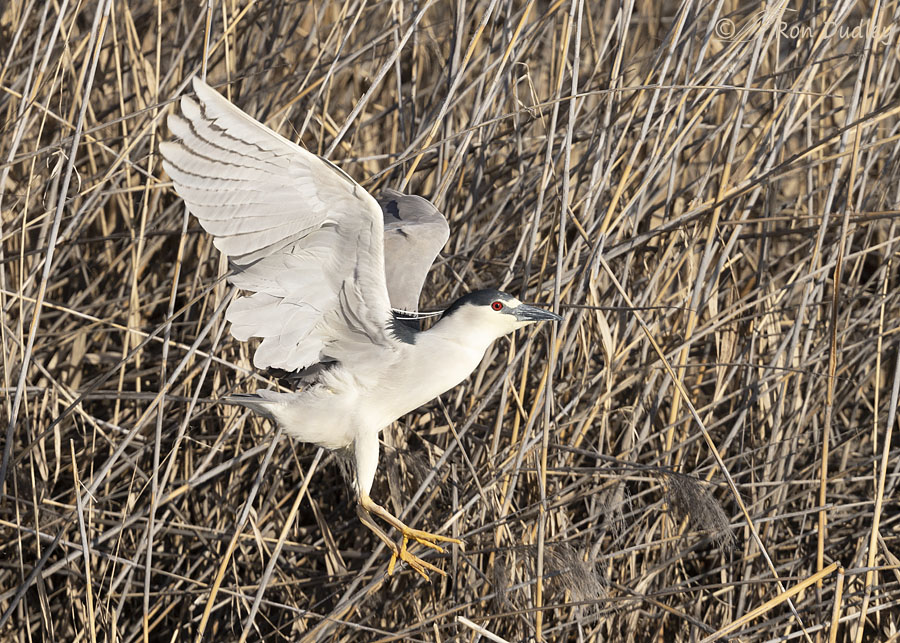
contributed to his red eye being the focal point of the viewer, and of the active focus point of my camera.
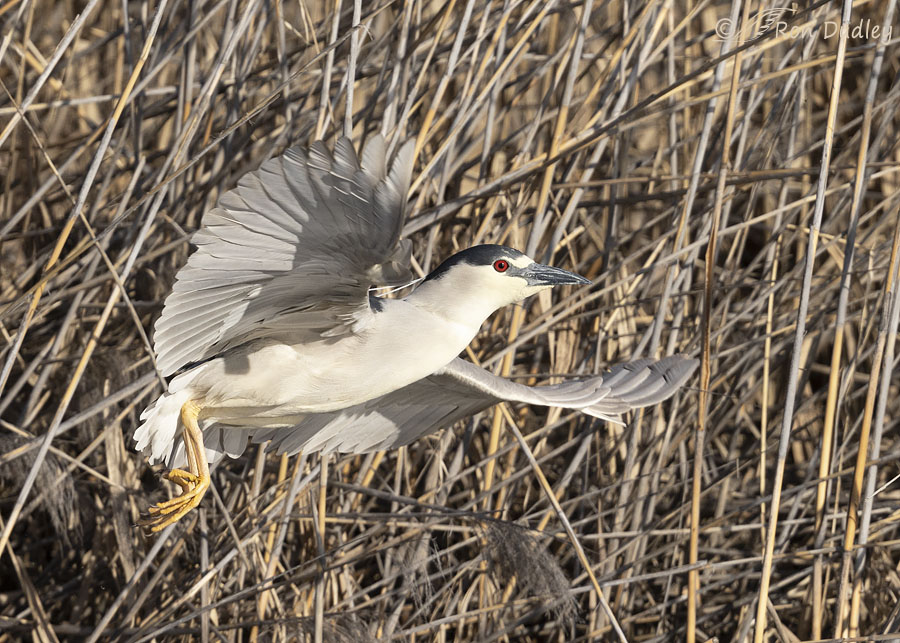
He’s trying to clear the phrags so he can curl off to his left and away from me but…
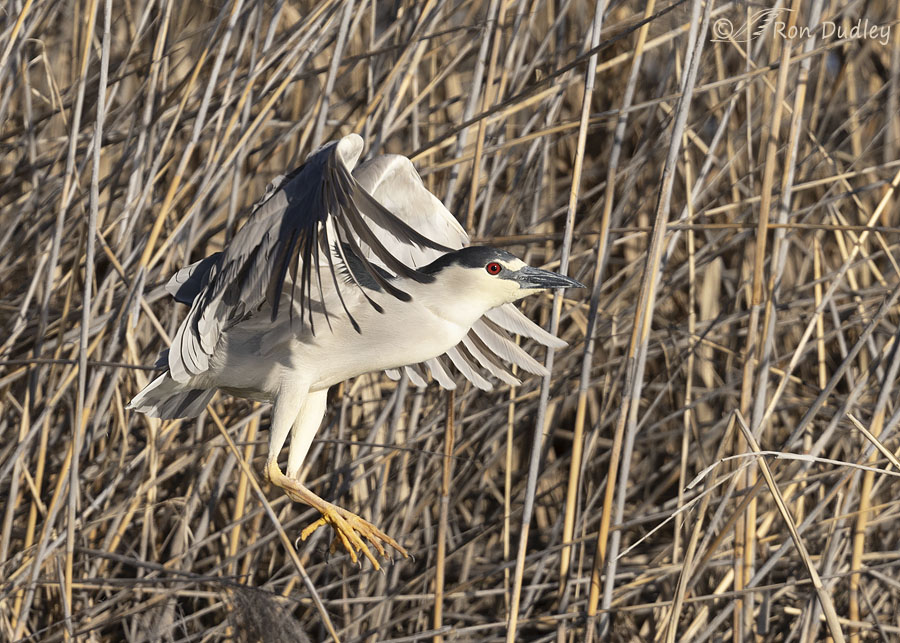
those phrags are easily 8′ tall so…
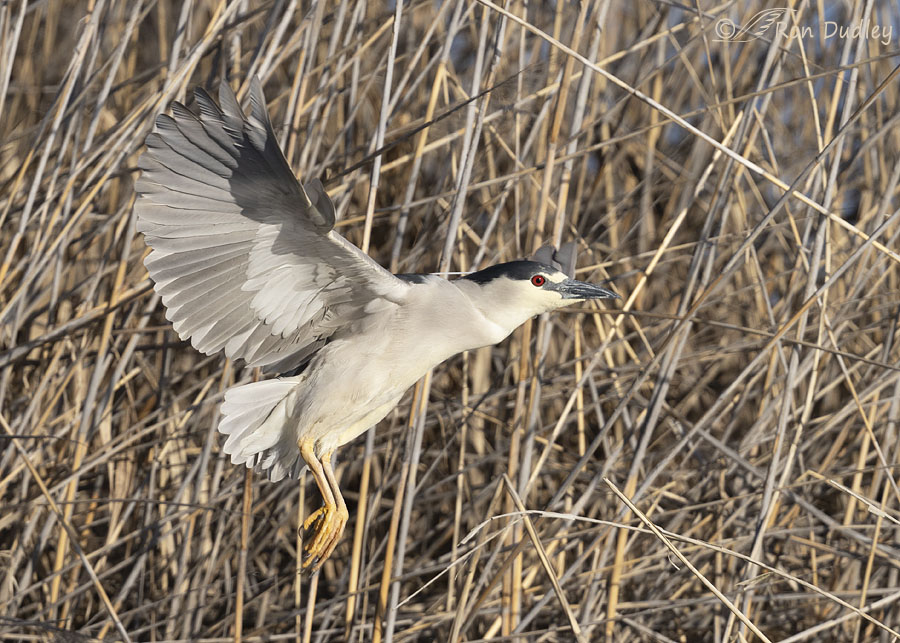
it took him a while.
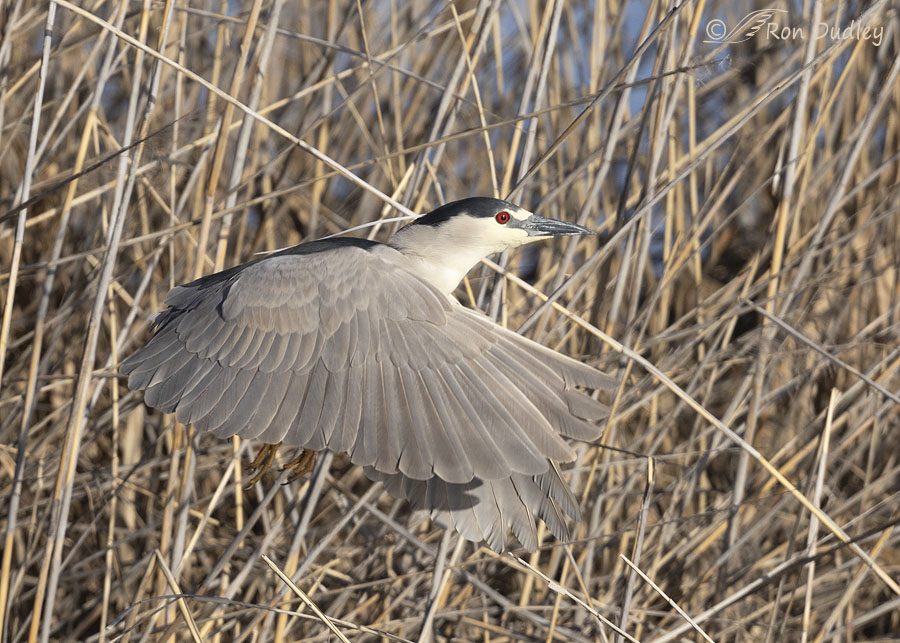
Finally, he’s gained so much elevation that the phrags are beginning to thin out up top, so we’re beginning to get glimpses of blue water back there.
In the next shot in the burst I clipped his wings at the top of the frame so I’m not including that photo.
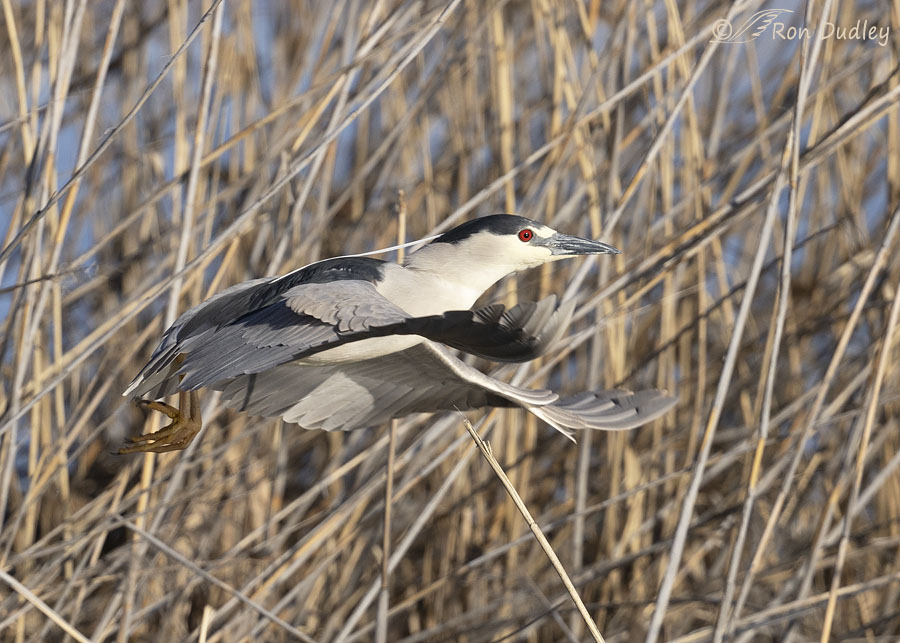
In the shot after that, thanks to his horizontal wing position I got him fully in frame again.
But that was the last of my good luck. After this photo I lost focus on him for 13 shots. By the time I reacquired sharp focus he’d…
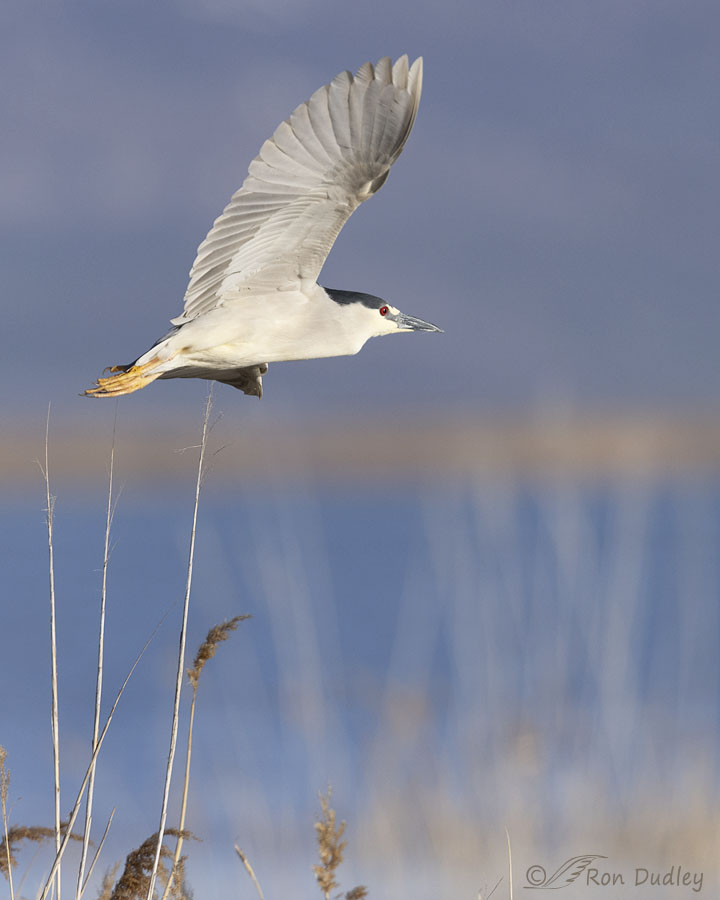
cleared the phrags and was beginning to turn away from me. The blue in this photo is all water, with a horizontal band of far-away phrags directly below the heron. I’ve cropped the image as I have in an attempt to show his elevation relative to the tips of the phrags below him.
Yes I know, I posted 19 photos two days ago and 13 today and that’s almost certainly overkill. But it isn’t every day that I can keep a flying bird in frame and in focus for that many shots and I do think there’s some value in seeing the takeoff and flight progression in stop-frame.
Right or wrong, that’s my rationale. And my excuse
Ron
Note: Image techs for these photos were in the range of 1/2500 – 1/4000, f/6.3, ISO 500, Canon R5, Canon EF500mm f/4L IS II USM + 1.4 tc,.


Once again I love this series. And some of pictures within the series are great stand-alone photos! It’s so informative to see your process instead of just the totally successful images. Thanks.
Wonderful series Ron!
Thanks for sharing!
Charlotte Norton
Handsome!
Ron, I do enjoy seeing the flight series of the birds. It is interesting to see every thing that gets in the way and they manage to clear them with ease. Some times they turn away from the camera and you may not like the shot, however we get to see something we normally never view. Keep up the Series photos coming and thanks so much.
“Sometimes they turn away from the camera and you may not like the shot”
Funny you should say that Trudy. Tomorrow’s post includes several behavioral shots just like that.
Definitely NOT overkill, Ron, especially as all these images tell a story. Birds are so skilled at avoiding obstructions (as are bats and flying insects as well). It is a joy to watch their maneuvering, especially as I can manage to trip over my own clodhoppers!
Thanks, Marty. Since my surgery, tripping has become a specialty of mine.
I do love this series and appreciate the work that went into it – both for you and for the bird.
Defiinitely precision flying – and photography.
You, your camera and the heron make a fine team.
Thank you from both the bird and from me, EC!
Beautiful series! His red eye is amazing. And the tangle of phrags – if I were him, I’d be thinking “Who thought it was a good idea to land here?” Fine for skulking, maybe, but no quick, easy getaway for sure!
Carolyn, he’d actually been fishing from that spot in the phrags. If you look carefully you can actually see some of the water at the bottom of photo #1 (from the bent reflections).
Gotta agree with Judy’s observation that they look better in flight. Kinda stumpy looking in the first photo: no neck and a truncated rear end. The takeoff photos reveal their elegance with neck and tail feathers showing.
In the next to last photo I’m pretty sure he is sprouting a couple of pectoral fins on the wing below his neck.
These extended series are informative and entertaining
Ha, I see what you mean about pectoral fins, Lyle. I also like this observation about how they look to you when they’re perched – ” no neck and a truncated rear end”.
Lovely series, good to see them again, for me they have been far a few. That is a lot of processing!
Thanks, April. It sure is (was).
What a great series! I’m loving these flight series. Can’t have too many of them from my perspective. They reveal so much about the mechanics of flight, not to mention the sheer beauty. I’m also in awe of the depth of field you’re getting both in today’s photos and the great blue heron series with the f-stops you used. I’m a photography novice but your results defy my expectations!
“Flight series…reveal so much about the mechanics of flight, not to mention the sheer beauty”
That’s my philosophy, Julie. Which is why I decided to post another one.
As to depth of field – for this bird I was much further away, and the subject was much smaller, than was the case for my recent series of a Great Blue Heron in flight. Those two factors explain the DOF in this series but I’m still trying to figure it out with the GBHE series.
You are on a roll with the series of sharp photos of birds in flight with good backgrounds. I feel lucky when I get one crisp one that out of a series.
“You are on a roll with the series of sharp photos of birds in flight”
Kent, truth be told the R5 gets some of the credit. When the animal/eye detection works it can’t be beat. I wish it worked better more often but I guess I shouldn’t complain.
Saw one very briefly when we were in Ontario in 2006 for work. A very long wait to see one properly in this beautiful series of photographs. It’s one thing landing in the phrags but flying out must take a lot of effort and great skill.
David, I imagine they both take skill, though landing in phrags may take less effort.
Not over kill at all! I really enjoy and appreciate these photo series of takeoffs and other behaviors.
And to be honest, also a bit jealous of the skill you have developed and the equipment you have. But very grateful that you share these with the rest of us. Favorite shot, for its artistic value, is #11.
“also a bit jealous of the skill you have developed and the equipment you have”
Thank you Michael but keep this in mind. Generally you only see the best I have to offer. I get at least my share of klunkers.
When you referenced his “nuchal plumes” ( new concept to me ) I couldn’t
see them for quite a bit– and then realized that they’re close in diameter
and even color to the surrounding phrags…..thanks for the tag on the subject
( I had wondered if they were part of a breeding display ) and thought that
in addition they look –in this habitat, anyway–much like the surroundings…..
Kris, you may be thinking the plumes are something they aren’t. The plumes are bright white and much thinner than most of the phrags. They can be seen best in photo #3.
Great climb out series on a very short runway. I felt increasing anticipation as I viewed the series, and elation at the final shot of him clearing the phrags.
Ahh, suspense – always a plus in a flight series. Or any series, really. Thanks, Brett.
Beautiful series, Ron! I never think of them “in flight” when, generally, they are hunkered down and well hidden somewhere. MUCH prettier flying IMO Trying to take off out of the Phrags IS a challenge.
Trying to take off out of the Phrags IS a challenge.
Thanks, Judy. I agree, they tend to look better aesthetically when they’re in flight.